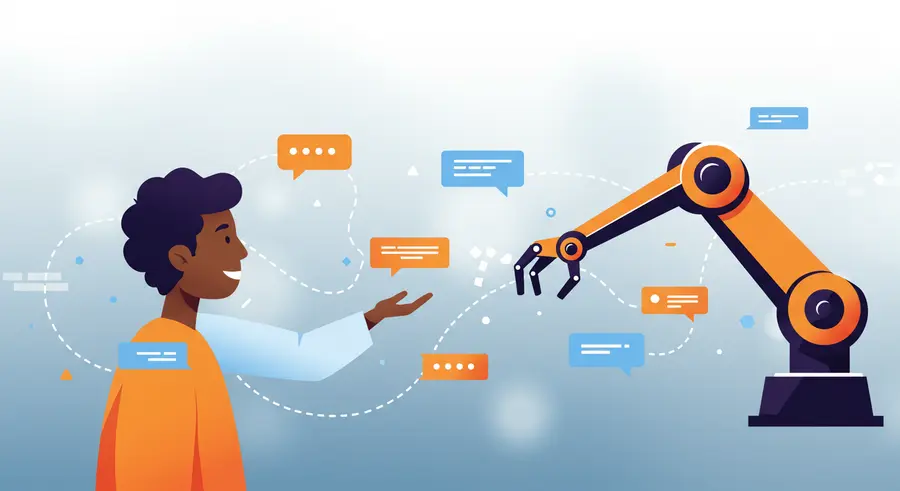RPA in Customer Service: Enhancing Experience and Efficiency

In today's competitive landscape, customer service is paramount. Businesses are constantly seeking innovative ways to enhance customer satisfaction, improve response times, and optimize support operations. Robotic Process Automation (RPA) offers a powerful solution by automating repetitive, rule-based tasks within customer service workflows, thereby freeing human agents to focus on complex issues and personalized interactions.
What is RPA in Customer Service?
RPA in customer service involves deploying software robots to mimic human actions when interacting with digital systems. These robots can handle a wide array of tasks, from data entry and retrieval across multiple applications to processing customer inquiries and updating records. By automating these mundane but critical tasks, RPA significantly boosts efficiency and accuracy.
Key Applications of RPA in Customer Service
- Automated Data Entry and Retrieval: RPA bots can quickly extract and enter customer information across CRM systems, order management platforms, and other databases, eliminating manual errors and saving time.
- Streamlined Inquiry Processing: Bots can automatically categorize and route incoming customer queries, providing instant responses to frequently asked questions (FAQs) or escalating complex issues to the appropriate human agent. This improves market analysis.
- Order Management and Fulfillment: RPA can automate tasks related to order status updates, tracking information, and even initiate returns or exchanges, ensuring a smooth post-purchase experience.
- Customer Onboarding: Automating the collection and verification of customer data during the onboarding process, including identity verification and background checks, speeds up the process and ensures compliance.
- Complaint Resolution: While complex complaints require human intervention, RPA can automate the initial steps, such as gathering relevant information, retrieving customer history, and initiating standard resolution processes.
- Personalized Communication: RPA can trigger automated, personalized emails or messages based on customer interactions, ensuring timely follow-ups and proactive communication. This can also help in providing personalized financial research.
Benefits of Implementing RPA in Customer Service
- Improved Efficiency and Speed: RPA bots work 24/7 without breaks, processing tasks much faster than humans, leading to quicker resolution times and reduced customer waiting periods.
- Enhanced Accuracy: By eliminating manual data entry and human error, RPA ensures higher data accuracy, leading to fewer mistakes in billing, order processing, and customer records.
- Cost Reduction: Automating repetitive tasks reduces the need for extensive human resources dedicated to these functions, leading to significant operational cost savings.
- Increased Customer Satisfaction: Faster response times, accurate information, and personalized interactions contribute directly to a better customer experience and higher satisfaction levels.
- Scalability: RPA solutions can be easily scaled up or down based on demand, allowing businesses to efficiently manage peak periods without significant additional investment in human capital.
- Employee Satisfaction: By offloading mundane tasks to bots, human agents can focus on more engaging, strategic, and empathetic interactions, leading to increased job satisfaction and reduced burnout.
RPA and AI: The Future of Intelligent Customer Service
The true power of RPA in customer service emerges when combined with Artificial Intelligence (AI) and Machine Learning (ML). This synergy creates Intelligent Automation, enabling bots to handle unstructured data, understand natural language (NLP), and make more informed decisions. For instance, AI-powered chatbots can leverage RPA to retrieve information and execute transactions seamlessly, providing a more human-like interaction. This integration also helps in gaining deeper market insights.
Challenges and Considerations
While the benefits are substantial, successful RPA implementation in customer service requires careful planning. Organizations must identify suitable processes for automation, ensure data security and compliance, and manage the integration with existing systems. A clear governance framework and change management strategy are essential for maximizing ROI and ensuring a smooth transition.
Conclusion
RPA is revolutionizing customer service by delivering tangible benefits in efficiency, accuracy, and customer satisfaction. By strategically deploying automation, businesses can create a more responsive, personalized, and cost-effective customer support ecosystem. As technology continues to evolve, the role of RPA in transforming customer service will only grow, paving the way for an intelligent and highly automated future.